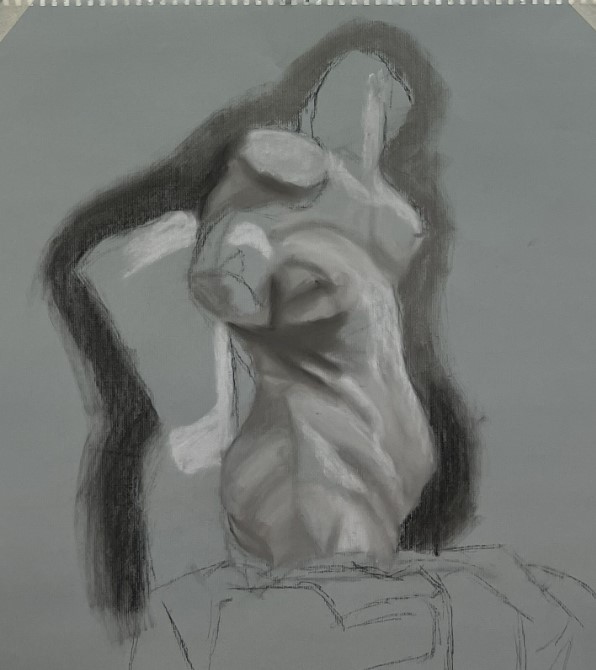This week was a lot of fun because we were able to have class outside (yay Vitamin D!) as well as a cancelled class on Thursday(because of break, which I’m thankful for because it was also my birthday!!).
During class, we did an exercise called “Pointing”, an activity I did in my fys last year. I really enjoy this activity because it takes the pressure off raising your hand in class while still participating and sharing what you enjoyed or found interesting in the assigned reading. It is also a really easy way to listen for common themes in the text, made clear when people repeat the same quote or idea found in the text. During pointing, I mentioned the sentence from Barbieri-Low’s text, “...a true masterpiece(a work seemingly made by the gods) can be created only when the artist forgets his patron, forgets his commission, and even forgets himself in his process of attuning with the Dao and becoming one with his materials. In his forgetting, he is actually remembering his natural, spontaneous self” (Barbieri-Low, 51). Found this quote to be very inspirational but also important when it came to the artisans and their jobs. With the craft work of an artisan, it is a craft that can be taught, but cannot be mastered unless one experiences the “flow” to truly understand their craft. “Flow” is a way of losing yourself into your work and forget about the time or the place you are even in. You are in a relaxed and focused state of mind. Some of the best artisans needed to understand this flow in order to find their true potential and create the most beautiful work.
As an artist, I have experienced the flow many times, and is something that is very special and truly makes you forget where you are or what you are doing. I always forget my surroundings because I have all these ideas forming in my head while I am using my hands to create a sculpture or while I am painting. It can also happen sometimes when I am really focused on an assignment as well as an artwork, but it is not as common. It is such an incredible and relaxing experience and it always feels so rewarding.

Barbieri-Low, Anthony J. Artisans in Early Imperial China. Seattle: University of Washington Press, 2007.